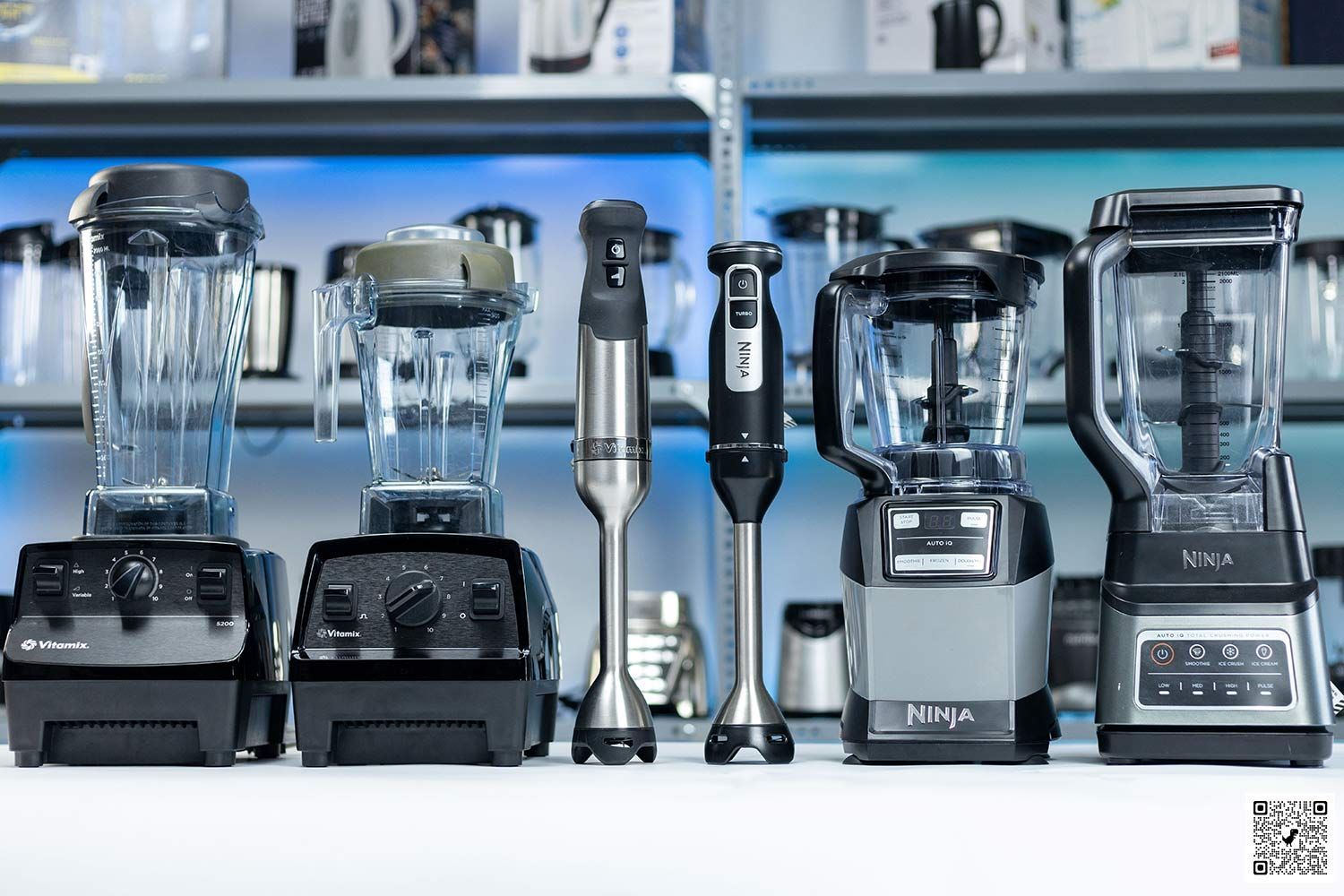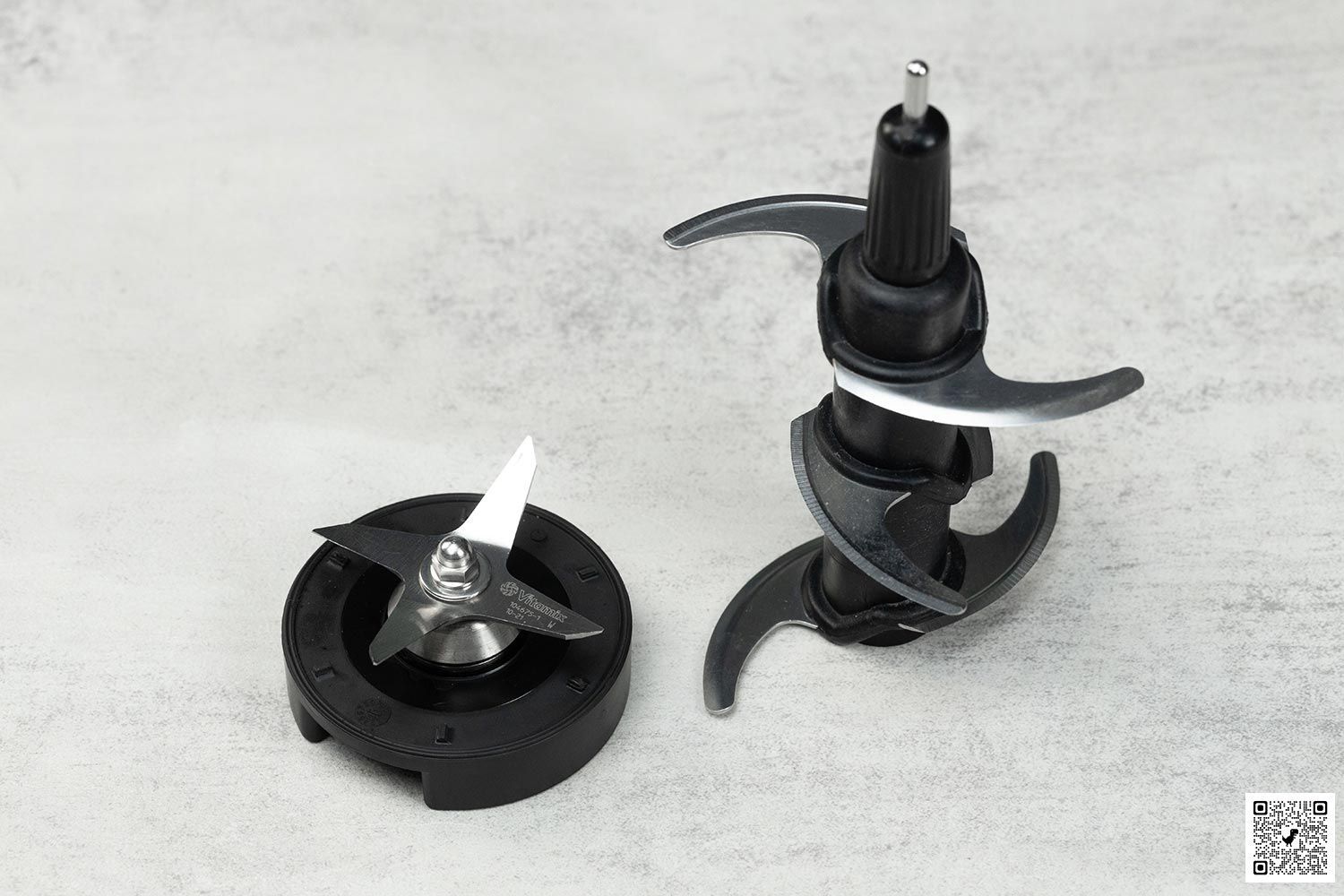Vitamix vs. Ninja Blender — The Unbiased Comparison

These two brands are now, by a considerable margin, the most popular names of blenders in today’s market. To some extent they are direct competitors in becoming the foremost blender brand. But, in a more detailed comparison, we can see that they have several key differences.
Each brand comes in various models which have their own specific features and functionalities, making them all unique from each other. The thing is, not everyone knows or realizes all that differences. And, the effort involved in getting the in-depth information of each model seems to be not that easy.
That’s why, here in this post, we’re going to help you determine if it’s worth it to spend the extra money on a luxury brand like the Vitamix or if you should get a less powerful Ninja which is advertised to blend anything, but at a cheaper price point?
Let’s find out together!
Vitamix vs. Ninja: Which is Cheaper?
Since its establishment in 1949 as a high-end brand in the blender industry, the Vitamix has been producing numerous state-of-the-art products with prices ranging from $300 to $650. To become the best of the best, all of them are built from high-quality materials in a construction that’s made to last.
On the other hand, its rival comes at a far cheaper cost (under $350), providing an option that makes owning an outstanding blender easier for those who are running on a tight budget. Of course, at this low price point, you can’t expect to find a machine that perfectly matches all of your requirements.
But it doesn’t mean the Ninja has been left behind in the competition to prove that it is the best performer around. To be fair, they are still extremely well made kitchen tools with the look and feel of a quality instrument.
Make sure to take a look at the following articles to learn more about Vitamix and Ninja blenders.
Vitamix vs. Ninja: The Functionality War
Vitamix | Ninja | |
|---|---|---|
Motor power | 2.2 HP | 2.0 HP |
Price | Low - Medium | Medium - High |
Dishwasher safe | Yes | Yes |
Warranty | 5-7 years | 1-2 years |
Blades material | tainless steel | tainless steel Plastic |
Container > Lid | BPA Free | BPA Free |
1. Performance
Both the Ninja vs. Vitamix are powerful blenders that are designed to serve more than one cooking purpose. With their super-sharp blades, all basic blender operations such as crushing ice, making drinks, pulverizing nuts, and chopping frozen vegetables can be easily handled in just seconds.
That being said, The Vitamix is a bit more powerful and is better at blending tougher foods, especially in the long run.
Not only that, while the Ninja product lines carry a warning against blending hot liquids, Vitamix blenders work like a beast, making sure that hot soup is never a problem for them.
So, in respect to the performance, although the visual difference between the two is fairly minimal, I think the Vitamix has won the battle.
2. Speed
Providing up to ten different speed settings, the Vitamix allows user to flexibly adjust the blending speed between 500 and 37,000 RPMs. However, with the Ninja, there are just three suggested speeds with a pulse button to choose from.
Having a wide range of settings is not really necessary, but it might give you more blending control, offering a lot more convenience.
3. Durability
Blenders built with high quality materials should have a longer lifetime than the cheaper ones. In fact; however, how long will they last may largely depend on how you utilize and maintain them.
So, at this point, it’s really difficult to reveal exactly which brand can ensure operational efficiency for a longer time. It all depends on how you will care for your blender.
4. Blades Material
Every Vitamix model lives up to its name with the stainless steel blades that provide more durability and perfect blending results.
Its blade’s housing is also made of high-quality metal, which is a noticeable difference from the cheaper Ninja blenders using sharp blades that come with plastic shaft.
It also has to be indicated that due to the blades assembly, almost Vitamix machines are more relatively difficult to clean by hand, especially when making thick concoctions.
Clean up is still very easy with both Vitamix and Ninja blenders.

5. Warranty
As one of the manufacturers that offers the best customer service in the industry, all new Vitamix blenders come with at least a 7-year full warranty (5-year for Certificated Reconditioned models), ensuring many years of service.
The full warranty even covers the handling fee and 2-way shipping, while those for the Ninja do not.
On another note, the Ninja is backed up by 1-2 years guarantee, depending on models. To receive a replacement product, every customer is required to pay an additional charge for delivery.
6. Accessories
All parts of both Ninja and Vitamix blenders are dishwasher safe (except for the Vitamix’s containers) which is an indispensable standard. And for safety issues, their containers are made from BPA-free material.
If you want to purchase additional containers, lids, handles, or blades, they’re widely available for both brands.

Final Conclusion
Both Vitamix vs Ninja are high quality, sturdy blenders which can help create endless culinary creations more quickly and conveniently. Thanks to the small footprint design, they tuck away neatly on most kitchen counters as well as provide the option for portability.
That being said, there are some differences that give each one a distinct character. Here’s what we can conclude from all of this:
Vitamix is the more costly blender brand of the two. However, what they do offer is better smoothie results, superior blades, high capacities and more powerful power. Besides, their high-quality build will ensure many years of use, making the extra cost absolutely worth it. If you’re seeking for the gold standard, these machines deserve your consideration.
On the other hand, Ninja tends to take the gold when it comes to cost comparison. They do well what they’re supposed to do, leaving you in no doubt of their abilities and versatility. Because they’ve manufactured at a much lower cost, of course, more plastic parts, smaller warranty and limited speed setting are expected.
But for those who are low on funds and only use their blenders to handle some simple tasks, the Ninja seems to be a good alternative.